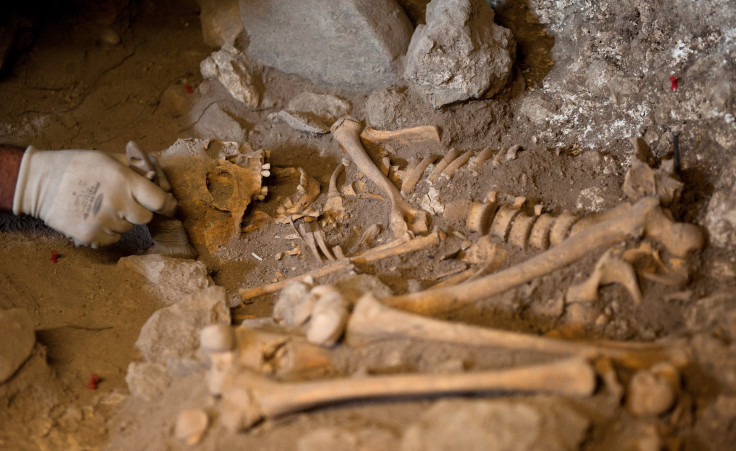Bronze Age Forefathers' Genetics Live Out In 2 Out Of Every 3 European Men

Historians categorize ancient societies into three distinct ages based on their tool-making abilities: the Stone Age, Bronze Age, and Iron Age. (By this standard, our current period might be called the Silicon Age.) A study conducted at the University of Leicester finds nearly two out of three modern European men descend from just three Bronze Age forefathers.
The Bronze Age, an era of roughly 3,000 years, represents a period of social, economic, and technological advances. The start of this historic period, identified by the original and then widespread use of metal, varies by region. Historians mark the beginning of the Bronze Age in Greece and China as before 3000 B.C., while in Britain, the start is logged at about 1900 B.C. In all cases, the period follows the Stone Age.
In the earliest years of the Bronze Age, craftsmen located in the contemporary Middle East blended stone with pure copper, which due to its rarity was used only for precious objects. By 3000, though, copper availability and practices had spread outward from the Middle East, and metalworkers were beginning to use bronze, an alloy of copper and tin. Historians tuck the early copper phase into the Bronze Age, since the period marks the beginning of widespread trade with escalating exports of metal objects far and wide. Along with craftwork and economic progress, the Bronze Age includes invention of the wheel, increased knowledge of navigation, creation of the ox-drawn plow, changes in burial practices, spread of horseback riding, and expansion of weaponry. Continued use and exploration of metals during this time quite naturally led to the Iron Age and further articulation of the new skills developed during the years of bronze.
These landmark achievements may be visible, yet what historians find a little less clear is how people changed during these early periods. And so this is where geneticists step into the picture.
Family Tree
For the current study, a group of researchers led by Dr. Mark Jobling, a professor in the department of genetics, determined the DNA sequences of 334 men belonging to 17 populations from Europe and the Middle East. The researchers concentrated on the Y chromosome, passed down to men from their fathers, and used new methods for analyzing genetic variation that they believe provides a better estimate of the timing of population events. Their choice of mutation rate, which can be measured in a number of different ways, was also key, since it influences the results.
Looking at the gathered genetic data as a whole, the researchers constructed a genealogical tree of European Y chromosomes.
The configured tree had three very young branches, which accounted for the Y chromosomes of about two-thirds (64 percent) of the men studied. Importantly, the shape of the branches indicated recent explosions of population, falling within the Bronze Age. Populations from the Balkans to the British Isles, say the researchers, underwent an explosion between 2,000 and 4,000 years ago.
Though exact events may be difficult to infer, continued advances in genetic technology will allow for continued research. “Y-chromosome DNA sequences from skeletal remains are becoming available, and this will help us to understand what happened, and when," explained Dr. Chiara Batini lead author of the study.
Source: Batini C, Hallast P, Zadik D, et al. Large-scale recent expansion of European patrilineages shown by population resequencing. Nature Communications. 2015.
Published by Medicaldaily.com



























